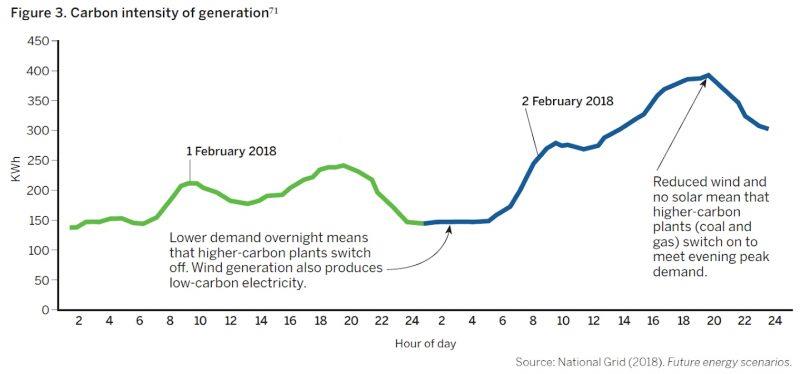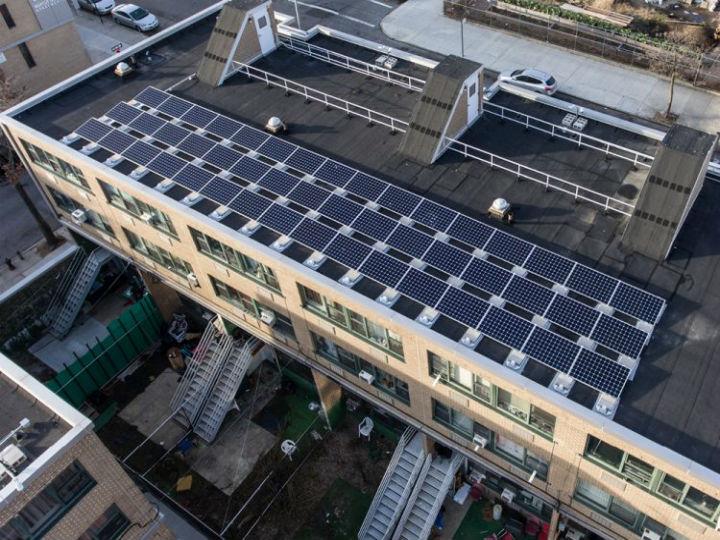by Davine Janssen
“Neither energy efficiency nor low-carbon heat technologies can achieve decarbonisation on their own,” say Jan Rosenow and Richard Lowes of the Regulatory Assistance Project (RAP), an independent think-tank.
Instead, a combination of the two is “the most economic and practical approach to heat decarbonisation,” the two experts argue in a report published in March.
Heating buildings accounts for almost one-third of total EU energy demand, and around 75% of it is provided by fossil fuels.
“Whilst there are uncertainties around the optimal technology mix for heating in the future, it is clear that electrification will have to play a significant role,” the two experts write – through individual or large-scale heat pumps, connected to district heating networks.
Heat pumps – devices that use electricity to “upgrade” low value energy, such as the heat in outside air – are a very efficient method of providing space or hot water heating, according to the European Commission’s joint research centre.
But the efficiency of the technology is just half the story, experts argue.
In a world that moves towards low-carbon electricity, how much power we use matters less than when we use it, Rosenow explained during a webinar on the topic.
Electricity that is consumed during times of peak demand is more expensive and more carbon intensive, he explained – because expensive and polluting fossil back-up generators are used during those hours.
On the other hand, there are times when electricity is especially cheap and clean, for example during windy or sunny days when wind turbines and solar panels are working at full capacity.
“Electrified heat can take advantage of this by consuming electricity when there is a lot of zero-carbon electricity in the system and avoiding peak hours when emissions are typically the highest,” the report states.
The generated heat should then be stored in the structure of the building, or, if present, in a hot water tank for space or hot water heating, hence functioning as a “thermal battery”.

The importance of efficient houses
The potential for such flexible operation is “surprisingly large” the experts write, “even without a hot water tank (…) heat pumps deployed in energy efficient buildings can be turned off for periods of several hours without affecting thermal comfort,” they argue.
However, the possibility for heat pumps to use electricity flexibly depends on whether buildings can indeed behave as “thermal batteries” – how well they’re insulated.
“The more efficient a building, the more flexible the operation of its heat supply.” Rosenow and Lowes explain.
Unfortunately, the majority of buildings in the EU are quite the opposite of thermal batteries.
And while the European Commission puts a “building renovation wave” high on its agenda, several European countries have been dragging their feet on building renovation programs.
“Progress is worryingly slow,” Rosenow told EURACTIV in emailed comments.
“We need to at least double or even triple the renovation rate in most countries and deliver much deeper renovations,” he stated. And “without strong financial support programmes and ambitious regulation this will simply not happen,” he warned.
Rosenow and Lowes outline several policy recommendations in their report, ranging from the phase out of subsidies for fossil fuel-based heating appliances, to electricity-friendly energy taxes, and stricter targets for the building sector.
“I’m very much in favour of minimum energy performance standards for all buildings that are announced well in advance so that businesses and households know what it expected of them and the market can prepare for this,” Rosenow told EURACTIV in emailed comments.
Nevertheless, “electrification can start now and concentrate on the buildings most suitable. We can then learn, innovate and scale up the deployment rate as we renovate more and more buildings,” he added.
Rewarding flexibility
But even in houses that allow for flexible operation of heat pumps, a lack of financial incentives might discourage people from installing them.
“Tariffs for electricity in Europe are mainly flat for most customers,” Lowes explained during the online presentation of the study. “So if you operate a heat pump, you see no benefit as a customer if you avoid the peak hours,” he said.
To encourage customers to shift their heating loads to off-peak times, Lowes and Rosenow call for “smart pricing,” which aligns financial incentives to the actual costs and pollution of the energy system during a specific timeframe.
Examples of such dynamic pricing range from “time-of-use tariffs” – where a predefined price difference is set for blocks of the day or week – to much more “granular” pricing – where the price of electricity is determined on a real-time basis to reflect the actual conditions of the energy system during a certain interval.
For supporting the flexible use of heat pumps, “a simple time of use tariff would be sufficient if differentials between on and off peak prices are big enough,” Rosenow told EURACTIV in emailed comments.
“We already have time of use tariffs in various countries and they can be adapted for heat pumps,” he added.
However, once dynamic pricing schemes are in place, their effectiveness will depend on how easy it is for customers to respond to them, the experts caution.
This is where digital technologies come into play, Lowes explained during the webinar – by automating the operation of heat pumps based on price variations.
Seasonal challenges
According to Rosenow and Lowes, dynamic pricing schemes and efficient houses would go a long way to unlock the flexibility potential of heat pumps for day-to-day variances.
“Intraseasonal balancing is, however, more challenging,” they caution.
During a cold winter, a largely electrified heating sector could result in a “significant demand for additional capacity” of the power sector.
But once a larger part of the heating sector is electrified, “intra-seasonal storage solutions” will have to be put in place, such as large thermal storage tanks connected to district heating networks.
In countries with extensive gas grids, boilers running on decarbonised gases such as biomethane or hydrogen could help get customers through the winter, they add, even though that would require customers to have two heating appliances installed.
In any event, seasonal challenges should not stop EU policymakers from supporting the installation of heat pumps, the experts argue.
“The relatively small number of electric low-carbon heating systems currently installed in most EU countries creates no significant problems and should not be a reason for delaying the rollout of low-carbon heat technologies,” they write.
*first published in: www.euractiv.com




 By: N. Peter Kramer
By: N. Peter Kramer
